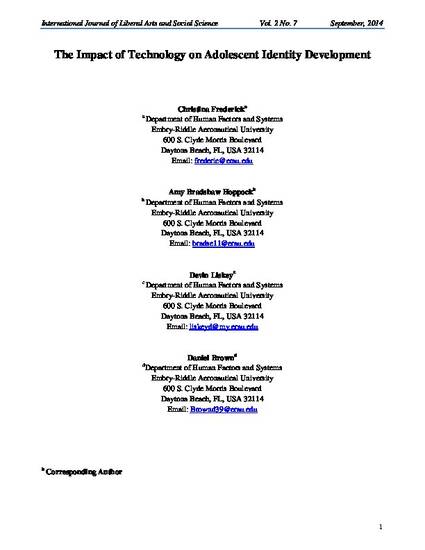
This paper explores how technology use in adolescence facilitates adult identity achievement and presents evidence that technological objects, such as smartphones have become adolescent transitional objects. Early and late adolescents were surveyed about technology use and feelings associated with technology. Among older adolescents, anxiety level was related to smart phone use, such that higher anxiety was associated with greater smart phone use. The feelings and behaviors associated with use of the preferred device are consistent with feelings and behaviors associated with use of a transitional object. In contrast, younger adolescents did not appear to use technology as a transitional object. This difference may be that older adolescents are in an active phase of transition, developmentally, with movement to a university. Understanding how technology is viewed by adolescents provides insight into how technology can be used in critical environments, such as schools and homes, to facilitate a healthy transition to adulthood.
Available at: http://works.bepress.com/christina_m_frederick/44/
